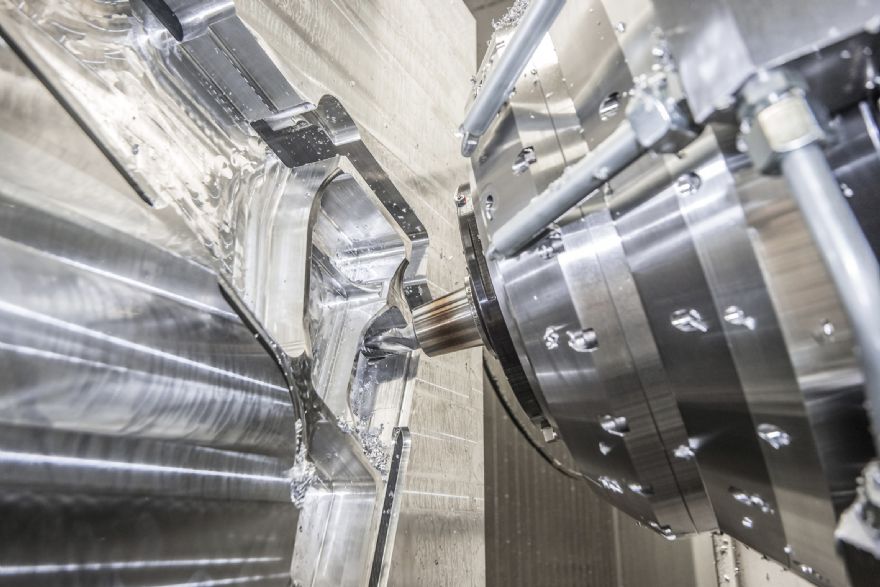
While
EMO celebrated its 50th anniversary at the end of September in Hannover,
Starrag, which exhibited at the show, was looking back on an engineering anniversary of its own — 25 years of the Sprint Z3. The inconspicuous machining head of the Ecospeed series was officially unveiled for the first time at the turn of the millenium — what started out as a solution for military aircraft became a key module in modern aircraft production.
The Sprint Z3 parallel kinematic machining head has always proven to be a popular feature on Starrag’s stand at
EMO and, despite its compact design, is a always a draw for visitors. Even after 25 years, the technology behind it is still as relevant today as it was back then. The drive head contains a highly dynamic, three-axis kinematic system, which, unlike conventional fork heads, swivels via articulated kinematics and thus enables rapid, precise tool movements. The mechanics are based on three Z modules that ensure linear movements – free of contact rings and rotary couplings, which increases rigidity, reduces wear and ensures consistently high precision.
It was introduced as the central element of the new Ecospeed series – a high-performance machine series for the fast cutting of large aluminium components. Originally developed for military structural parts, the parallel kinematics concept quickly became established in civil aviation as well. Today, this three-axis machine is the global standard for machining complex aircraft structures.
Modular digitalisation conceptThe machining head shows its particular strength when networked with the Integrated Production System (IPS) – Starrag’s modular digitalisation concept. It combines Ecospeed systems into highly automated, flexible production systems with a high level of transparency, process reliability and availability.
The Sprint Z3 also benefits from sensors on the spindle, drives and axes that continuously supply data that is analysed by IPS modules. This supports condition monitoring, process optimisation or preventive maintenance. The motion control system of the three-axis milling head remains in the CNC, but the IPS provides the decision-making basis for stable and productive machining – a digital interplay of precision and intelligence.
A great example of the effectiveness of this connection is demonstrated at Korea Aerospace Industries (KAI). The company operates one of the world’s largest interlinked Ecospeed lines – with nine machines, four set-up stations, two transfer carts and around 90 pallets. The machining times for the wing ribs of the Airbus A350 have been reduced to around a fifth of those for earlier conventional aircraft. The availability of the line is around 97% – proof of the high efficiency and reliability of the system.